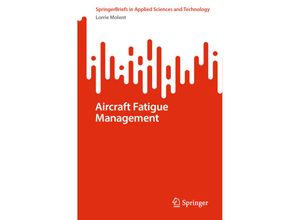Fatigue occurs under cyclic loading and can significantly degrade the operational capability
and safety of metallic aircraft components and structures. This book provides summaries of some
metallic aircraft structural integrity issues innovative but established examples of
maintaining operational capability-airworthiness and assessments of safe in-service fatigue
lives. These topics are based on a through-life fatigue management philosophy that ensures safe
and continued operation including during life extensions that are almost inevitably required.
This philosophy is underpinned by observations of the behaviour of fatigue cracks in actual
structures subjected to realistic service loading conditions. The book includes topics like
aircraft design requirements individual aircraft fatigue loads monitoring airframe fatigue
testing sources of fatigue-nucleating discontinuities and prediction of fatigue crack growth
from these discontinuities. All these aspects contribute to discussing methods of assuring the
structural integrity and operational capability of realistically cracked structures. The book
also discusses the exponential behaviour of lead or dominant cracks-those leading to first
failure-and the practical significance of differences between fatigue fracture topographies
produced under constant amplitude and variable amplitude loading. The book can be a valuable
reference for researchers and professionals interested in aircraft fatigue management and
allied fields.

